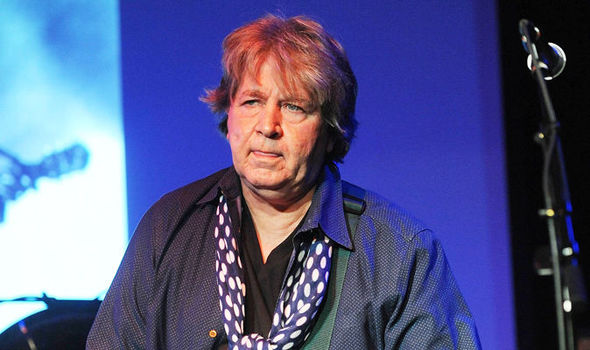
Mick Jagger was at a birthday party for Eric Clapton when Mick Taylor leaned over and told him he was leaving the Rolling Stones. It was 12 December 1974 and Jagger, Taylor and assembled guests were watching a fireworks display. “Do you think he was serious?” a bereft Jagger asked Ronnie Wood who was standing nearby.
Taylor was deadly serious and this was a decision that had been a long time in the making. In the 2012 documentary Crossfire Hurricane, Taylor said he was addicted to heroin and left to try and protect himself and his family from the maelstrom of being a member of the Rolling Stones.
The issue of songwriting credits was also mentioned by Taylor in an interview with Mojo in 1997. “We used to fight and argue all the time. And one of the things I got angry about was that Mick had promised to give me some credit for some of the songs – and he didn’t. I believed I’d contributed enough. Let’s put it this way – without my contribution those songs would not have existed. There’s not many but enough, things like Sway and Moonlight Mile on Sticky Fingers and a couple of others.”
In his 1995 interview with Rolling Stone, Jagger said he felt that friction between Taylor and Keith Richards was also a contributing factor: “I think he found it difficult to get on with Keith.”
Whatever the reason, the reality was that the Stones were losing a mercurially talented player. For all their combined talents, Taylor was a virtuoso, whose stunningly fluid and emotive playing elevated the Stones to new heights. Just as the band was transformed when he joined its ranks, it was equally transformed when he left – a testament to his peerless and prodigious talent.
For Taylor, who joined the band following the death of Brian Jones in 1969, stepping into a band of the scale of the Stones was a shock. He was just 20 and much younger than the rest of the Stones when he made his baptism-of-fire live debut at their free concert in Hyde Park, on 5 July 1969, in front of 250,000 people. This was just two days after Brian Jones had been found dead in his swimming pool, after being fired from the band almost a month earlier.
It was revered British blues purist John Mayall who recommended Mick Taylor to Jagger. In April 1966, Mayall had asked Taylor to join his band the Bluesbreakers, replacing the departing Peter Green, who in turn had replaced Eric Clapton.
When Jagger and Richards invited Taylor along to Olympic Studios he was reportedly shocked by how under-rehearsed the Stones were. At that point, he thought he was simply there to play a session.
He was invited back the next day to continue rehearsing with the band, who were recording their eighth studio album, Let It Bleed. Taylor ended up overdubbing guitar on the tracks Country Honk and Live With Me, as well as the single Honky Tonk Women.
Jagger and Richards were blown away by the youngster’s playing and invited him to join the band. Mick Taylor would go on to play on five Rolling Stones studio albums: Let It Bleed (1969), Sticky Fingers (1971), Exile On Main Street (1972), Goat’s Head Soup (1973), and It’s Only Rock And Roll (1974). His stellar playing is also captured on the live 1969 album Get Yer Ya Yas out, recorded over four nights at New York’s Madison Square Gardens.
Mick Taylor’s playing would bring fluidity, spontaneity and excitement to the Stones. He was able to contribute a level of virtuosity that the Stones had not had before. Taylor re-energised the Stones and his tenure with the band would be defined by many as the golden era of the Stones’ recorded output. It was a view reinforced by Jagger.
“I think he had a big contribution,” Jagger told Rolling Stone magazine in 1995. “He made it very musical. He was a very fluent melodic player, which we never had and we don’t have now. Neither Keith nor Ronnie Wood plays that sort of style. It was very good for me working with him. I could sit down with Mick Taylor and he would play very fluid lines beneath my vocals. He was exciting, and he was very pretty, and it gave me something to follow, to bang off. Some people think that’s the best version of the band that existed.”
Live With Me was the first track Taylor played on as they put the finishing touches to Let It Bleed. His influence is immediate on this pacey song with its Stax-style 4/4 attack. On Honky Tonk Women, he reels off sultry and slinky blues lines that fit seamlessly within Richard’s groove-laden chops.
But it was on the Stones 1969 US tour, from 7 November to 6 December, where Taylor really started to make his mark and his playing can be heard on the band’s live album Get Yer Ya Yas Out (1969). Like Peter Green, there is a real melodicism to Taylor’s playing, with memorable motifs woven within expressive freeform playing. Taylor is also a mean slide player, as is evident on Love In Vain.
Leave a Reply